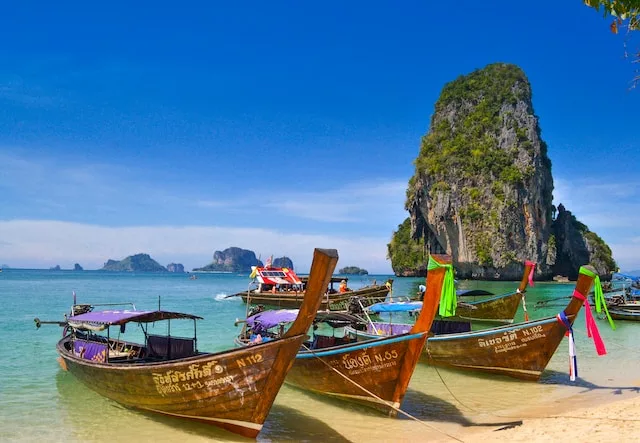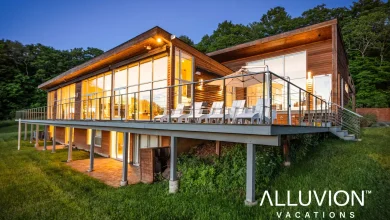
Table of Contents
ToggleThailand is known for its welcoming culture, beautiful landscapes, and affordable cost of living, making it an attractive destination for retirees. Whether you’re looking for a peaceful life in a tropical paradise or seeking adventure in bustling cities like Bangkok or Chiang Mai, Thailand has become one of the most popular destinations for retirement. If you’re considering retiring in Thailand, one of the key steps is securing a Long term visa Thailand.
In this article, we will guide you through the process of obtaining a Non-Immigrant O-A Retirement Visa, the most common visa for retirees, including requirements, the application process, and tips for a smooth transition to life in Thailand.
1. Understanding the Non-Immigrant O-A Visa (Retirement Visa)
The Non-Immigrant O-A Visa (commonly referred to as the “Retirement Visa”) is designed for foreigners who are 50 years or older and wish to retire in Thailand for an extended period. This visa allows you to stay in Thailand for up to one year and is renewable annually.
It is ideal for retirees who wish to enjoy life in Thailand without needing to worry about visa renewals every few months. However, like any long-term visa, the Non-Immigrant O-A Visa comes with specific requirements that you must meet to qualify.
2. Eligibility Requirements for the Non-Immigrant O-A Visa
To apply for the Non-Immigrant O-A Retirement Visa, you must meet the following eligibility criteria:
-
Age Requirement: Applicants must be at least 50 years old at the time of application. If you are under 50, you are not eligible for this visa.
-
Financial Requirements: You must demonstrate sufficient financial stability to support yourself during your stay in Thailand. There are two options for fulfilling this requirement:
- Monthly Income: You must show proof of a monthly income of at least 65,000 THB (approximately $1,800 USD). This income can be from pensions, savings, or other reliable sources.
- Savings: Alternatively, you can show that you have a bank balance of at least 800,000 THB (about $23,000 USD) in a Thai bank account. Some applicants may also choose a combination of both income and savings to meet the financial requirement.
-
Health Insurance: You must have a health insurance policy that covers you for medical expenses in Thailand. The policy should include coverage for hospitalization and treatments in Thailand, with a minimum coverage of 40,000 THB for outpatient treatment and 400,000 THB for inpatient treatment. Health insurance coverage is a new requirement and ensures that retirees will not burden the Thai healthcare system.
-
Criminal Background Check: You will need to provide a criminal background check from your home country, confirming that you have no criminal record. This background check should be issued within three months before your visa application.
-
Medical Certificate: You must submit a medical certificate issued by a licensed doctor, confirming that you do not have any contagious diseases, including leprosy, tuberculosis, or syphilis. You must also undergo a general health examination.
-
Valid Passport: Your passport must be valid for at least 18 months and have at least one blank page for visa stamps.
3. Application Process for the Non-Immigrant O-A Visa
Now that you understand the eligibility requirements, here’s a step-by-step guide to applying for the Non-Immigrant O-A Retirement Visa:
Step 1: Gather the Required Documents
The first step is to ensure you have all the necessary documentation for your visa application. You will need:
- Completed visa application form (available at your local Thai embassy or consulate).
- Valid passport (with at least 18 months of validity and one blank page).
- Passport-sized photographs (usually two).
- Proof of sufficient financial resources (bank statement, income certificate, etc.).
- Health insurance certificate.
- Criminal background check from your home country.
- Medical certificate (confirming no contagious diseases).
- Proof of accommodation (hotel booking, rental agreement, or a letter from your Thai sponsor, if applicable).
Step 2: Submit Your Application
Once you have all the required documents, you will need to submit your application to the Thai embassy or consulate in your home country. Some embassies may also accept applications online, so be sure to check the specific requirements of the embassy you are applying to.
You will also need to pay the visa fee at the time of application. The fee for the Non-Immigrant O-A Visa typically ranges from 2,000 THB to 5,000 THB (approximately $55 to $150 USD) depending on the embassy or consulate.
Step 3: Wait for Processing
Visa processing times can vary depending on the embassy or consulate, but typically it takes around 7-10 business days. Once your visa is approved, you will be issued a visa sticker in your passport, allowing you to enter Thailand.
Step 4: Enter Thailand
After receiving your Non-Immigrant O-A Visa, you can travel to Thailand. Upon entry, immigration will stamp your passport, granting you permission to stay in Thailand for up to one year.
Step 5: Reporting to Immigration
While staying in Thailand on a Non-Immigrant O-A Visa, you are required to report your current address to the local immigration office every 90 days. This is known as the “90-day reporting” process, which is standard for most long-term visas in Thailand. Failure to comply with this requirement can result in fines or deportation.
4. Extending Your Retirement Visa
The Non-Immigrant O-A Visa is issued for one year, and after that, it can be extended for another year. You will need to apply for an extension at the Thai immigration office before your visa expires. You must continue to meet the financial requirements and provide evidence of your ongoing eligibility.
5. Living in Thailand as a Retiree
Once your Non-Immigrant O-A Retirement Visa is approved, you can enjoy the many benefits of living in Thailand. Some of the top benefits include:
-
Low cost of living: Compared to many Western countries, the cost of living in Thailand is much more affordable, especially when it comes to housing, food, and healthcare.
-
Beautiful surroundings: From the beaches of Phuket to the mountains of Chiang Mai, Thailand offers stunning natural beauty. As a retiree, you can enjoy a relaxed lifestyle with access to both urban and rural environments.
-
Healthcare: Thailand boasts excellent healthcare facilities, with many hospitals offering international-standard medical care at affordable prices.
-
Friendly local community: Thailand is home to a welcoming and friendly population, and many retirees from around the world have found a sense of community in various expat groups across the country.
6. Key Tips for Retiring in Thailand
-
Plan ahead: Start your visa application well in advance of your intended retirement date. Be sure to check the specific requirements for your home country’s Thai embassy or consulate.
-
Maintain financial stability: It’s essential to meet the financial requirements for the Non-Immigrant O-A Visa. Keep track of your bank balance and ensure that your income or savings are adequate.
-
Explore health insurance options: Ensure that you have health insurance that meets the requirements for the visa and covers your healthcare needs while in Thailand.
-
Be aware of local laws and customs: Understanding Thai laws, particularly regarding visas and immigration, will help ensure you don’t encounter any issues while living in the country.
Conclusion
The Non-Immigrant O-A Retirement Visa provides a great opportunity for foreigners to retire in Thailand and enjoy the country’s many attractions and affordable lifestyle. By meeting the visa’s eligibility requirements and following the application process, you can make your dream of retiring in Thailand a reality. Whether you choose to live in the bustling city of Bangkok or a more serene location like Chiang Mai, Thailand offers retirees a unique blend of relaxation, adventure, and community. Enjoy your retirement in Thailand!




